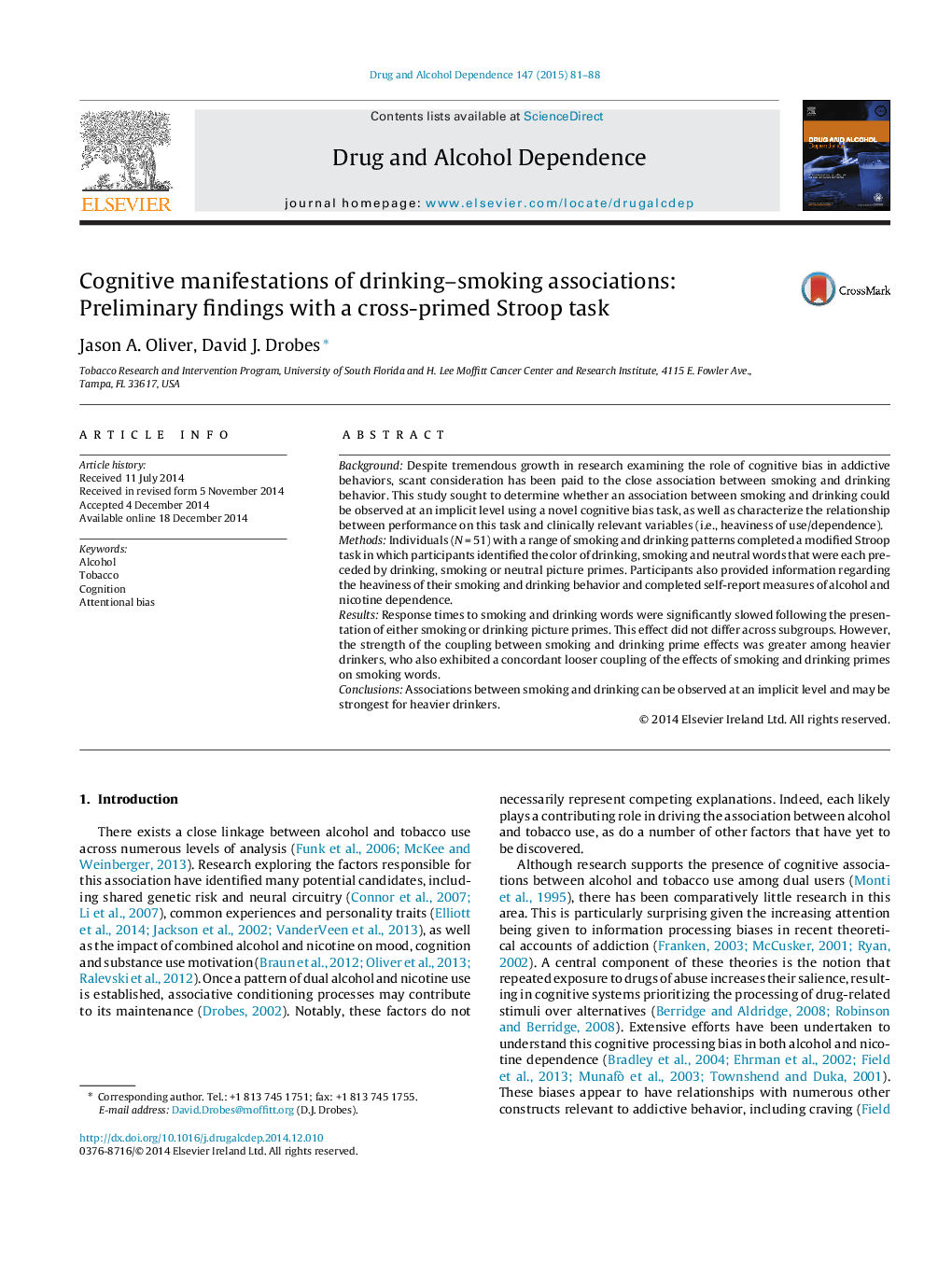| Article ID | Journal | Published Year | Pages | File Type |
|---|---|---|---|---|
| 1069874 | Drug and Alcohol Dependence | 2015 | 8 Pages |
•A modified Stroop task was developed and appears psychometrically sound.•Smoking and drinking are closely associated even at an implicit level of analysis.•Associations between smoking and drinking may be strongest among heavy drinkers.
BackgroundDespite tremendous growth in research examining the role of cognitive bias in addictive behaviors, scant consideration has been paid to the close association between smoking and drinking behavior. This study sought to determine whether an association between smoking and drinking could be observed at an implicit level using a novel cognitive bias task, as well as characterize the relationship between performance on this task and clinically relevant variables (i.e., heaviness of use/dependence).MethodsIndividuals (N = 51) with a range of smoking and drinking patterns completed a modified Stroop task in which participants identified the color of drinking, smoking and neutral words that were each preceded by drinking, smoking or neutral picture primes. Participants also provided information regarding the heaviness of their smoking and drinking behavior and completed self-report measures of alcohol and nicotine dependence.ResultsResponse times to smoking and drinking words were significantly slowed following the presentation of either smoking or drinking picture primes. This effect did not differ across subgroups. However, the strength of the coupling between smoking and drinking prime effects was greater among heavier drinkers, who also exhibited a concordant looser coupling of the effects of smoking and drinking primes on smoking words.ConclusionsAssociations between smoking and drinking can be observed at an implicit level and may be strongest for heavier drinkers.
